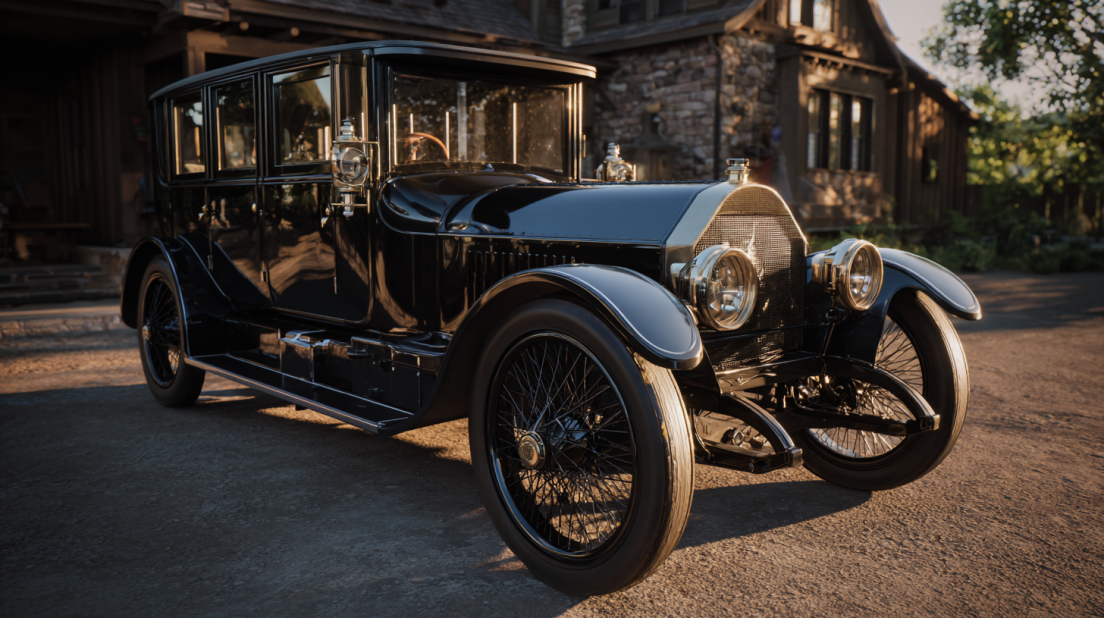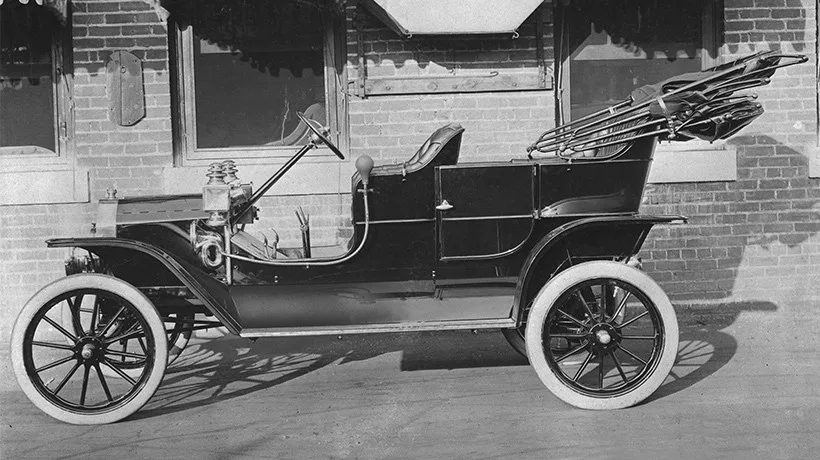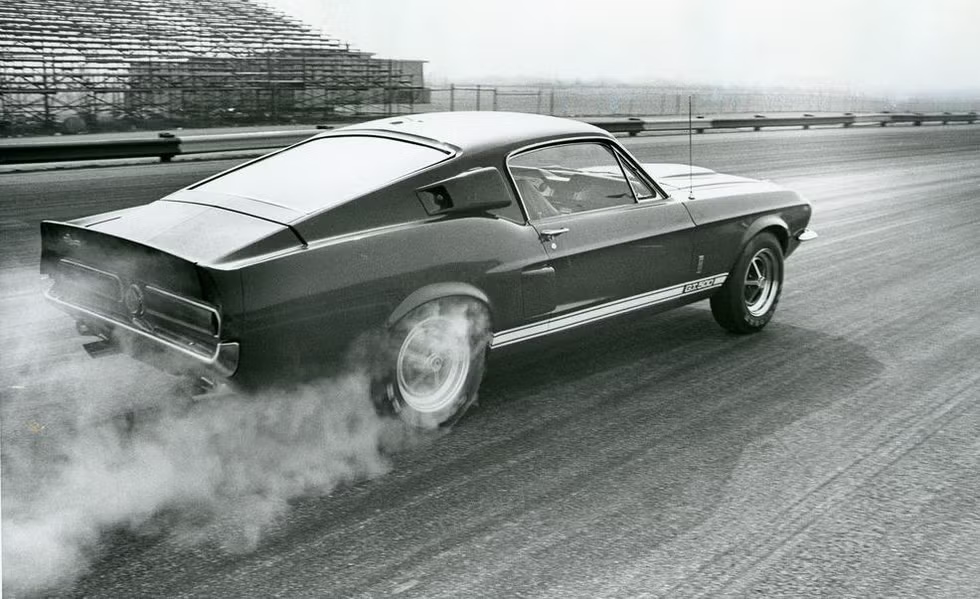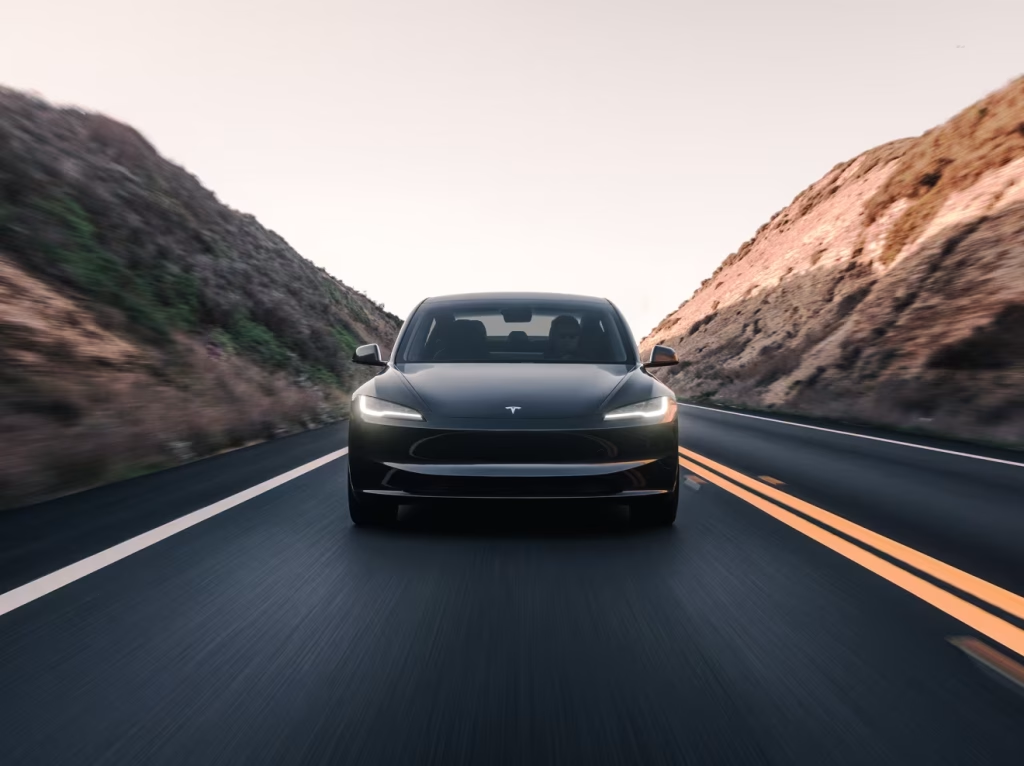From Cranks to Computers: The Evolution of Car Tech

Imagine having to crank your car, by hand, every single time. No push-buttons, no key fobs, and definitely no remote apps – just grit, determination, and the hope that your engine would start on the first try. That’s how things began in the earliest days of the automobile, and from that moment on, car technology has been in a near-constant state of evolution.
From the raw mechanical systems of the early 20th century to today’s semi-autonomous, software-driven machines, the car has come to reflect the technological progress of the day. In this edition of Under the Hood, let’s embark on a time-traveling road trip through the major milestones of automotive technology, and show you how the past shapes what’s parked in the garage of tomorrow.
The Early Years (1880s-1930s): Mechanical Marvels

A 1908 Ford Model T, one of the first mass-produced cars. Provided by Ford Motor.
In the early days of the automobile, cars were purely mechanical inventions. Engines had to be hand-cranked, braking systems were basic, and there were no electronics to speak of. Such rudimentary vehicles demanded constant maintenance and mechanical knowledge, but they were also incredibly revolutionary in their time.
The introduction of the internal combustion engine and the mass production of the Ford Model T in 1908 transformed cars from luxury items into everyday tools, practically overnight. Though crude by modern standards, early cars laid the roots for everything that followed, from drivetrain layouts to basic engine architecture.
Post-War Innovation (1940s-1970s): Power, Style, and Safety

The Shelby GT-500 perfectly encapsulates the golden era of automobiles. Provided by Car & Driver.
After World War II, the auto industry steamrolled into a new era. Manufacturers focused on power, comfort, and style, giving rise to the famed golden era of muscle cars, chrome trim, and tail fins. Under the hood, cars offered forward-thinking features like automatic transmissions, hydraulic brakes, and power steering, making driving more accessible to the general public and more than simply a way to get from A to B.
This era also saw the introduction of basic safety technologies. Seat belts became more common, and disc brakes began replacing drums on performance-oriented models. V8 engines became massively popular, especially in American cars, defining a generation of high-horsepower machines built more for speed than efficiency.
Electronics Enter the Chat (1980s–1990s): The First Digital Leap

While dated today, the Testarossa was the pinup of the era. Provided by Car & Driver.
By the 1980s, the mechanical age gave way to the digital era. Car manufacturers began integrating electronic systems to upgrade performance, efficiency, and lower emissions. The carburetor went out of vogue, replaced by electronic fuel injection controlled by a new brain under the hood: the ECU (engine control unit).
This period introduced onboard diagnostics (OBD), digital dashboards in some models, and electronic ignition systems. Safety also made major strides with anti-lock brakes (ABS) and the increasing adoption of airbags. These massive strides represented the full embrace of the computer age in car manufacturing.
While some of the styling of this era could vary and seem dated today, the technology it introduced paved the way for everything we take for granted in modern vehicles.
The 2000s: Comfort Meets Connectivity

The Toyota Prius was a pioneer in the hybrid vehicle market. Provided by Toyota UK.
The new millennium brought a wave of refinement to automotive technology. Navigation systems, Bluetooth connectivity, and keyless entry became increasingly common, turning cars into more comfortable, connected spaces. Ride quality, fuel efficiency, and cabin noise levels all improved thanks to improvements in engineering and manufacturing materials.
Internally, hybrid drivetrains made their mark, with cars like the Toyota Prius showing that electric motors and combustion engines could work together efficiently. Safety tech also made significant strides, with features like electronic stability control and curtain airbags becoming more widespread.
This was the era when cars began to feel less like machines and more like the fresh tech products of the day. Like the iPhone and the Blackberry, buyers started to expect a certain level of digital convenience alongside performance and reliability.
2010s-Today: The Age of Smart Cars

The Tesla Model 3 fast-tracked the modern era into a new age of smart cars. Provided by Tesla.
Over the past decade, vehicles have become smarter, safer, and more software-driven than ever before. Advanced driver-assistance systems (ADAS) like lane-keep assist, adaptive cruise control, and automatic emergency braking are now commonplace. What were once premium features are now standard on many models.
Infotainment systems dominate dashboards, with touchscreens, voice controls, and smartphone integration becoming essential. Meanwhile, electric vehicles (EVs) like the Tesla Model 3 have changed what drivers expect in terms of performance, efficiency, and tech-driven convenience, from over-the-air updates to regenerative braking.
Beneath the surface, cars are now packed with sensors, cameras, and code, making them capable of semi-autonomous operation in some cases. But with this complexity comes new challenges in maintenance, diagnostics, and repair, especially when dealing with modern salvage vehicles.
Tech Trends Shaping the Next Generation
Looking to the future, automotive technology shows no signs of stopping anytime soon. Fully autonomous vehicles are being tested on public roads, solid-state batteries promise to extend EV range and reduce charging time, and artificial intelligence is being integrated into everything from route planning to predictive maintenance.
Cars are also becoming increasingly connected; not just to smartphones, but to each other and to the infrastructure around them. Vehicle-to-vehicle (V2V) and vehicle-to-everything (V2X) communication could soon play a key role in traffic safety and efficiency.
As these innovations move from prototypes to production, they’ll eventually reach the used car market, making now a great time for buyers to get familiar with the technologies that will define the next generation of driving.
What This Means for AutoBidMaster Buyers
Understanding how automotive technology has evolved isn’t just a history lesson — it’s a practical advantage when shopping for a used or salvage vehicle. Whether you’re browsing for a classic restoration project, a budget-friendly daily driver, or a modern tech-packed ride, knowing what’s under the hood (and behind the dashboard) helps you make smarter decisions.
For example:
- Buying older vehicles often means simpler mechanics, easier DIY repairs, and fewer electronic components that can fail; perfect for hobbyists or low-tech enthusiasts.
- Shopping 90s and early 2000s models? Keep an eye on ECUs, OBD systems, and electronic sensors — these are common weak spots in salvage listings.
- Looking at newer models with ADAS or hybrid tech? Make sure to check for damage to cameras, sensors, or battery systems, as these can be costly to replace and may affect driveability or resale value.
AutoBidMaster gives you access to vehicles from nearly every era, from vintage icons to nearly-new EVs. With a little knowledge of how technology has progressed, you’ll be better equipped to spot both the risks and the hidden value in the vehicles up for auction.
So whether you want a car you can work on in your garage or one that can nearly drive itself, you’ll find it in our inventory, and now you’ll know exactly what to look for.
Sources (accessed June 2025):
- History.com
- Ford Motor
- SAE International
- HowStuffWorks
- Car & Driver
- Kelley Blue Book
- Wired
- Tesla
- NHTSA
- Edmunds
- Toyota UK
- Auction Rules and Buying Tips for Georgia - December 18, 2025
- Why Jeep Salvage Yards Are a Smart Option for Buyers - December 18, 2025
- Why Buick Salvage Yards Help Buyers Save Time and Money - December 18, 2025